Almost 90 years old, with the same voice, U.S. singer Barbara Dane returned to the same stage where she made her debut in Cuba half a century ago: Casa de las Americas. The jazz, blues and folk legend spoke with the contemporary tone of her last album, Throw it Away, the first of her production in 15 years.
Accompanied by Cuban and U.S. musicians (Ruy López-Nussa in percussion, Ruth Davies on the double bass and Tammy M. Hall at the piano), Dane shared the stage with Pablo Menéndez, her son, and Osamu, her grandson. The evening revived the singer’s first meeting with the Cuban public, at a time in which the 90 miles that separate the island from Key West had become so long that it seemed impossible to cross them.

In 1966 the singer landed, alone, in the oneiric Havana of the time. Or almost alone: she was accompanied by the guitar and a camera.
The tense atmosphere between the two countries had prevented for seven years any U.S. singer from stepping on Cuban soil. The nights of Nat King Cole and Frank Sinatra in Tropicana, el Trivolí or the Hotel Nacional were a thing of the past. But Dane broke the barriers, and her voice was heard together with that of Carlos Puebla, Víctor Jara and Violeta Parra in the First Meeting of the Protest Song in 1967.
If she had not dared, she would have placed at her feet the circuit of commercial music in the United States. According to an edition of Time from then, Dane had a pure, rich, rare voice like a 20 karat diamond. That’s what Lee Hildebrand, a jazz critic, also thought when describing her as “the best living singer of the classic blues of the 1920s.”
Despite the obstacles imposed on the spread of her work, Barbara received the recognition of some contemporaries – like Bob Dylan and Pete Seeger – who considered her a living icon. Dylan, recently awarded the Nobel Prize for Literature, said in an open letter to the influential musical magazine Broadside in 1964:
“I mean people like Tom Paxton, Barbara Dane, and Johnny Herald… they are the heroes if such a word has to be used here, they are the ones that lose materialistically. We need more kind of people like that, people that can’t go against their conscience no matter what they might gain.”
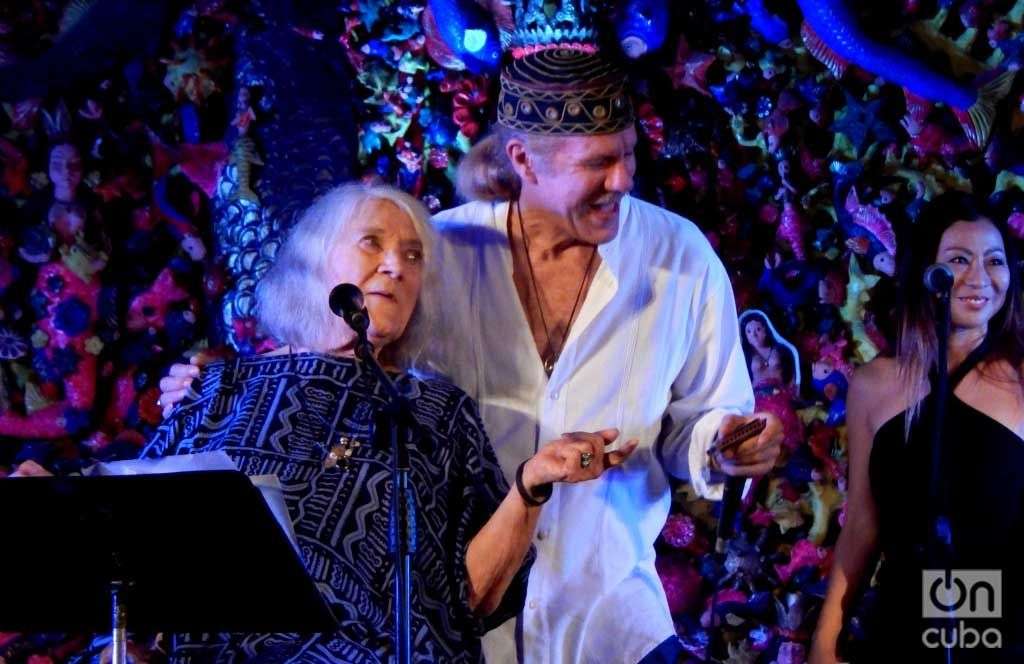
What was price did you pay for following your conscience? we asked Barbara Dane at the end of the concert.
“I had problems with my career in the commercial sphere. I was eliminated from several important tours due to my political positions against racism, wars and relations with Cuba. However, I continued singing in favor of peace and justice throughout the world,” she told us.
“They wanted to silence her, but they couldn’t,” affirms Pablo Menéndez, also a musician and director of the Mezcla group, “that’s why she is not as well-known in the United States as she should be. There are many artists who were inspired by her, but she is the authentic, the real one.”
Did coming to Cuba at that time affect you?
I don’t see it that way. Many of the invitations to go to other countries, and which allowed me to grow as an artist, came from the participation in that foundational meeting of the Protest Song in 1967.
HER SON’S VOICE
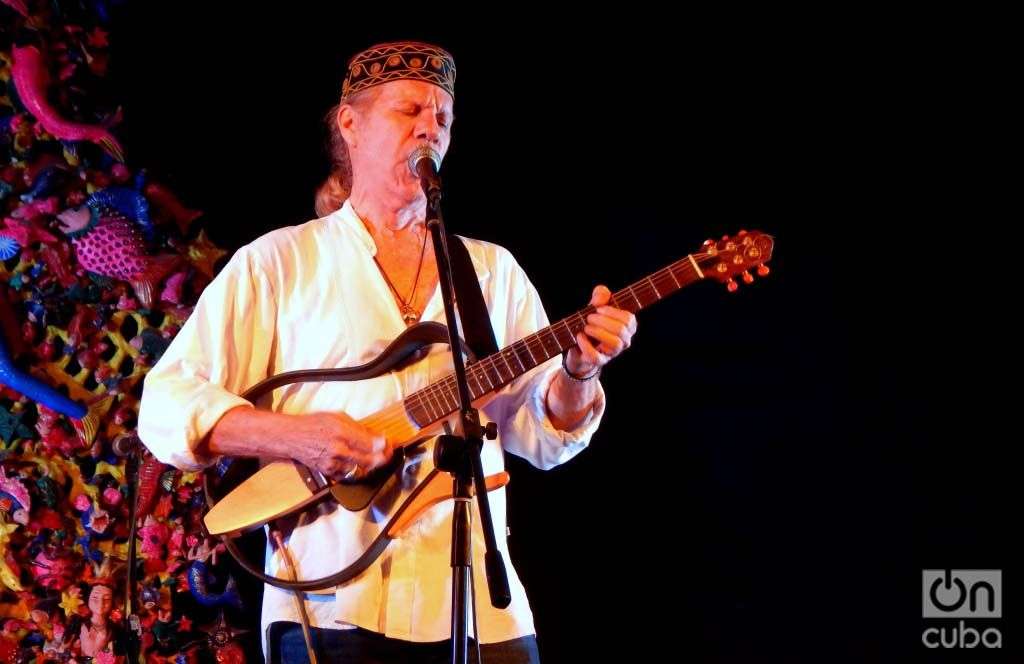
Pablo Ménendez, who has been living in Cuba for decades and heads the Mezcla group, founded a family on the island together with deceased actress Adria Santana. He came for the first time to accompany his mother. He liked it and stayed.
“She is a hopeless optimist. Don’t try to stop her being like this. Ever since she got to this country in 1966, alone, with her guitar. At the time many U.S. singers wanted to come, but they didn’t dare because they were afraid. She didn’t care about that, and for years continued travelling in that ‘guerrilla’ way. That rebelliousness forms part of her character since she was very young.”
“In 1947, when she was barely 20 years old, she traveled to the First World Festival of Youth and Students in Prague. The experience changed her life, made her see the world in another way. There she met young people from all parts of the world who defended their cultures, their ideas. That motivated her to take a closer look of her personal history, the history of her family.”
Barbara comes from a family of white southerners, from Arkansas, who moved in the 1920s to an industrialized city like Detroit. “That group used to disown their roots, but my mother sought in them the spirituality that she expressed through music, with genres like blues, jazz and folk. She felt the need to feel the way she was.”
Pablo affirms that her rebelliousness took her to places like Cuba and Eastern Europe, but also to conflict zones like Vietnam. “During the war she was in the liberated towns of the South, even under U.S. bombings. Even so, she survived and persisted despite so many vicissitudes, that’s why it’s so incredible that she returned here, to the same stage that saw her 50 years ago,” he comments.
“The last time that my mother sang in Cuba was in 1999. Now, thanks to the fact that at least diplomatic relations have been reestablished, she was able to travel with musicians from her latest record and give another concert here, at almost 90. For me it was an honor to accompany her again on the stage.
“She has greatly influenced my career. She is a model for me. Ever since I was born, I followed her advice, according to her guidelines, but she still continues ‘knuckling down’ with the concerts she gives, which are a surprise. This performance has been a novelty; she’s done things as if she were a young, avant-garde artist.”
“I AM PRIVILEGED TO SING WITH MY FAMILY”
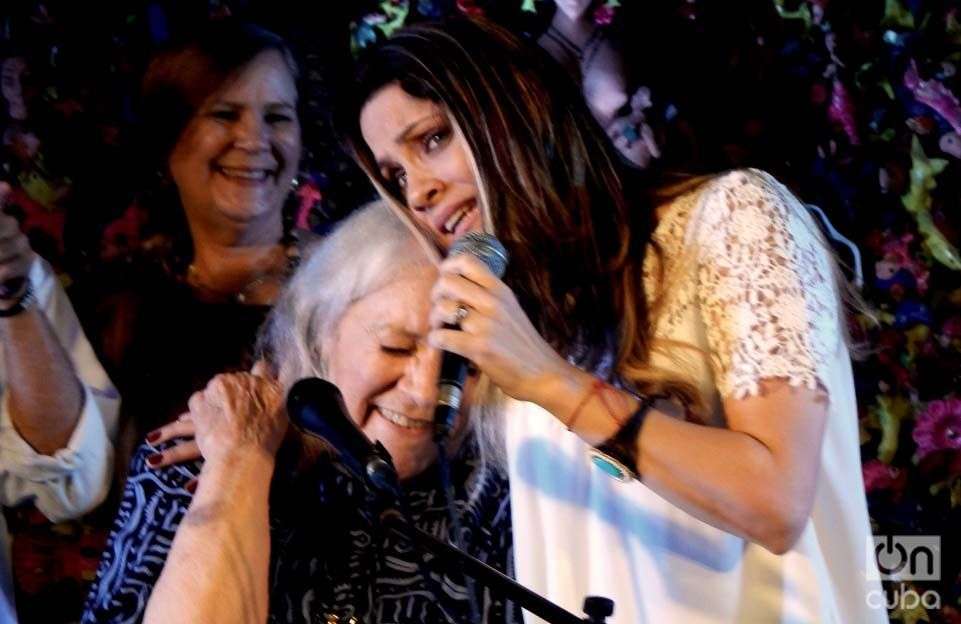
“Being on the stage with my son and grandson, being three generations of musicians who love each other so much, is something that very few can achieve and have the privilege and good fortune of living,” says Barbara Dane.
“This is thanks to my relationship with Cuba…. That Pablo stayed after the 1967 trip and that he formed a family has given me a very deep connection to this country, which goes beyond the mere visit. There are blood and fraternal ties that join me to this island. I feel that Cuba is my spiritual home.”
In addition to the personal ties, the singer has related to this country during the most hostile decades between both nations. During her 1966 trip, Barbara toured different provinces, sang in towns difficult to access, in schools and in numerous factories and workplaces. She participated the following year in the First Meeting of the Protest Song together with Alfredo Zitarrosa, Peggy Seeger and Daniel Viglietti.
In 1997, 30 years after that event, the artist again gave a concert in Casa de las Américas. She did so for the first time with her son and her grandson, who at the time was an adolescent. Two years later, in 1999, she participated in a mass concert with Silvio Rodríguez, Carlos Varela, Sara González, Luis Eduardo Aute and Angel and Isabel Parra.
THE MUSICAL COMPANY
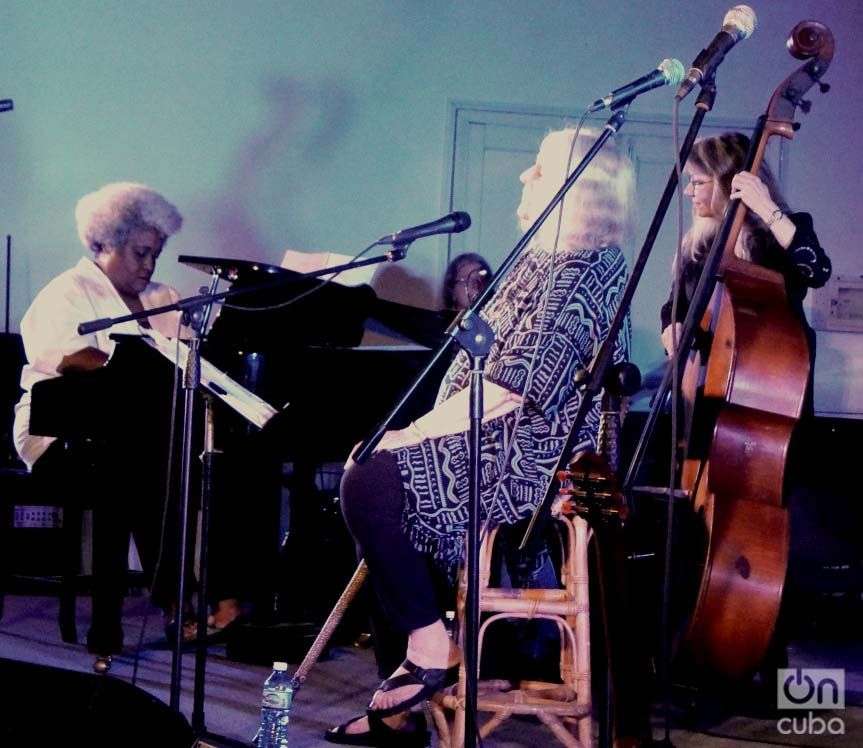
For her latest concert in Havana, Barbara Dane was accompanied by U.S. musicians who participated in the recording of Throw it Away. For the first time in Cuba, Ruth Davies and Tammy M. Hall expressed their happiness over giving this concert.
“In the United States I had played with Barbara Dane in California’s Santa Fe Jazz Center and in other places; but here the experience has been magical. She is a very generous artist, she transmits deep emotions with her music, and the public could perceive that. She has a great deal of power, in the best sense of the word, and opens her heart to the people,” pianist Hall commented.
Ruth Davies, who plays the double bass, affirmed that “seeing how music joins two nations like Cuba and the United States makes me feel very good. This doesn’t seem real. That she has returned to the same stage from 30 years ago is very important, and I am pleased to form part of that, of living something historic. I felt that sensation in the auditorium, how the public gave her their love.”
Japanese Yuko Foumato, who formed part of the chorus together with Cuban Yori Gómez, made her debut on a stage together with Barbara Dane. “I had never sung with her, and for me it is a great honor to have done so. I felt how everything flowed; it was a very natural and agreeable environment. I loved the interaction with the public and being with the world’s greatest blues singer,” the artist said.
WHY CONTINUE SINGING?
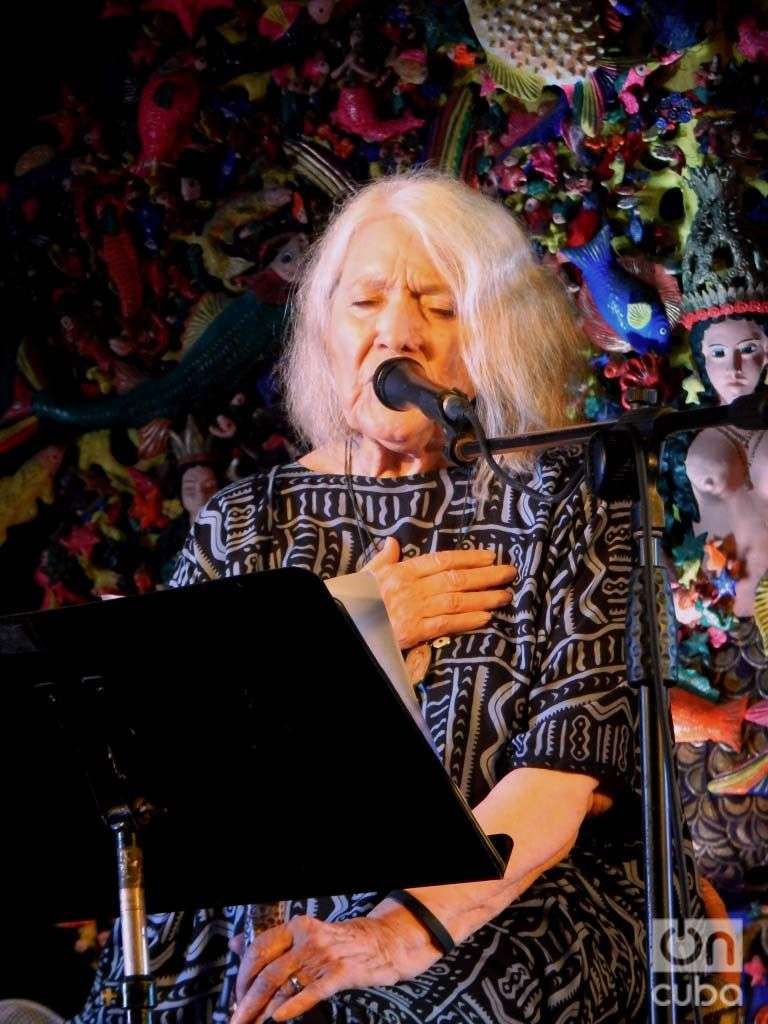
Barbara Dane is one of the last vestiges of a generation of dreamers. Her contemporaries were the protagonists of the Sex Revolution of the 1960s, the struggle for civil rights and against the Vietnam War, the fusion of electronic and traditional music, the drive of novel popular cultures on the margin of power, the student and youth movements that shook the world with their protests. She composes her songs based on that amalgam of experiences: her songs are witnesses to those times. But once all this has been left behind, why does the work survive?
“There really haven’t been many changes, what happens now is that the Protest Song comes from the minorities, from the marginalized workers, and they find a referent in the music that we did before. The black communities in the United States have a very live protest in hip-hop and rap. And that can be seen very well in the Asian, Chicano community, among U.S. students, even among the poor whites,” Barbara responds.
However, it cannot be said that that music has the same force or the same presence as in yesteryear….
What happened is that at that time there was a folk music boom in the United States, and the recording companies marketed it. That coincided with the emergence of the New Song or Protest Song movement. Thus, figures like Bob Dylan, Sandra Kerr and others became known. But the presence continues: nowadays the marketing of the Protest Song does not exist, but Protest Song exists.
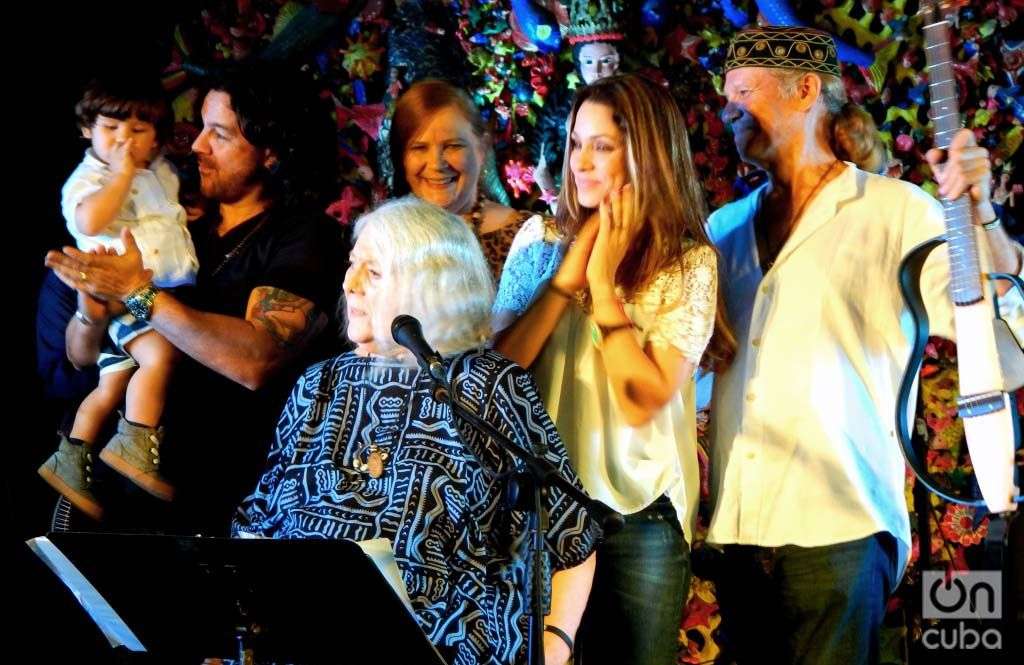
Is the social theme music exclusive to the minorities, to the marginalized?
I don’t think so. The forms have changed, now there are other genres and other artists. There are famous singers who sing protests in what they sell, but they do not explicitly say it. One has to read between lines to understand the message….
Despite the obstacles, song has helped our countries’ rapprochement, to build a bridge. Do you agree with this opinion?
Of course. That’s why I continue singing.

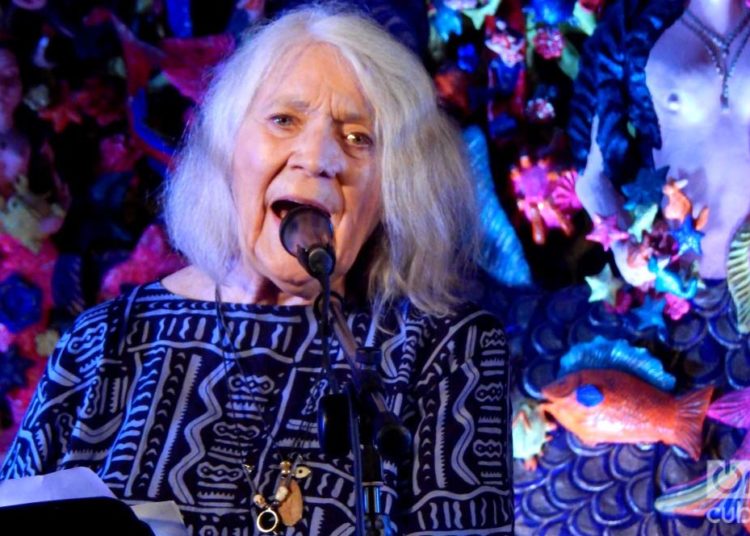




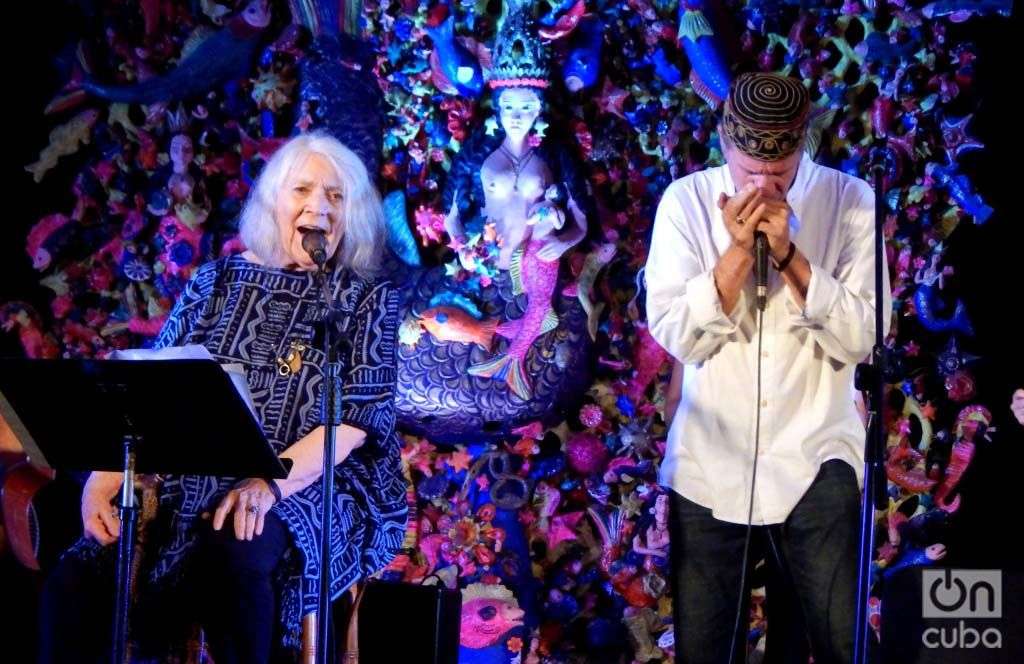
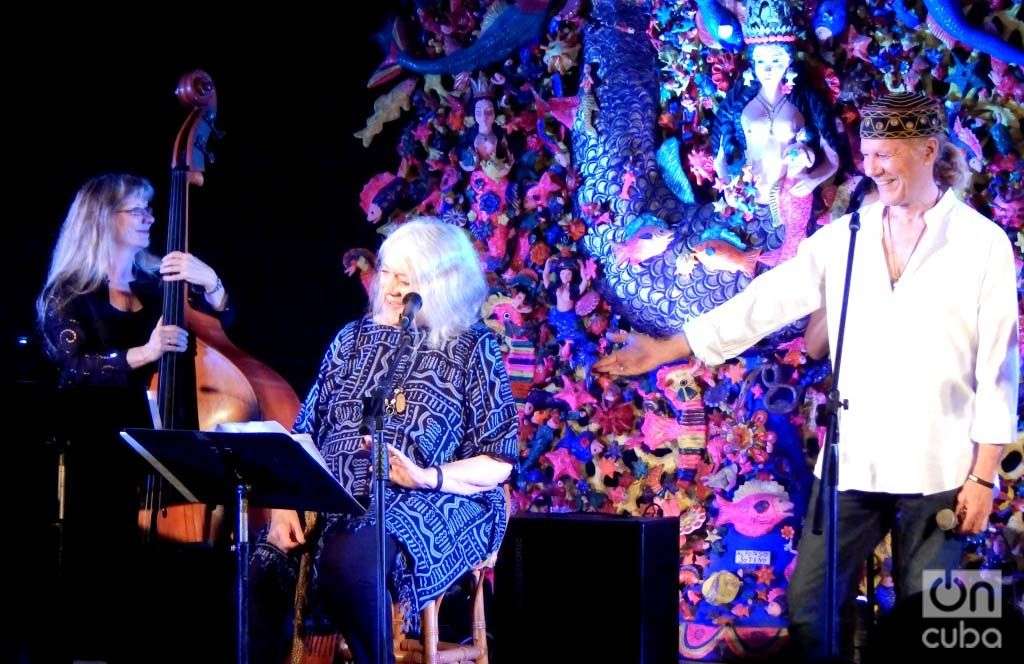





Thank you Barbara for your ongoing contribution to music, peace, political action, and progress. Thank you for your optimistic spirit. You are an inspiration.
Thank you for writing this wonderful, detailed article that gave me the feeling I really was there. We are grateful to be part of the Bay Area community with Barbara, and be able to hear her sing more often than most…she is much loved. My wife and I have decided to go to Cuba next month, visit with Pablo, and will be on the front lines if Trump decides to go after our brothers and sisters in Cuba in any way!
Barbara, your rendition of Paul Simon’s ‘American Tune’ got me thru this past weekend. You are the very best Alternative Act!
Thank you Barbara and Pablo for the wonderful description of your anniversery Concert in Cuba, the country of my dreams. I have lived in Sweden since 1957but born in Columbus, Ohio. I was privledged to meet and be with Barbara and Pablo with Mezcla here sometime in the 1970´s. They did a Concert on a ferry in the Baltic Sea which I arranged which blew the minds of these people in the Cold North. I am a long time member of the Swedish-Cuban friendship society and visited Cuban on one of their twice a year tours to Cuba. My friend and I were home to Pablo and his wonderful wife Adria, before she became ill and their son Osamu (then a hardrock star). What a thrill! I´ve missed your Concerts in California Barbara but one of them I sent our daughter Molly and husband to see when they were in the States. But I have most of your records and some of Pablo´s and I look forward to getting the one you release on your 90th birthday. I´ll be 80 in August and I promise to play it on my party for our friends here in Sweden and Russia who are like you still going strong and struggeling for a World free from oppression with love and music for all. Your friend, Marilyn